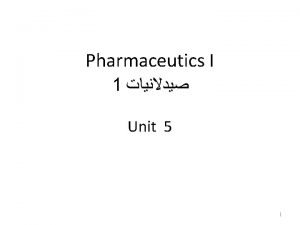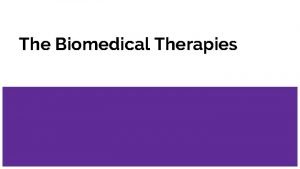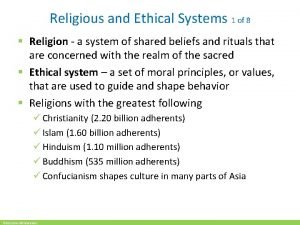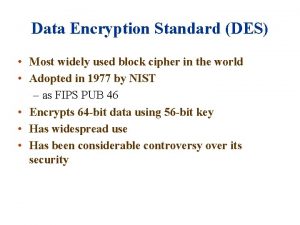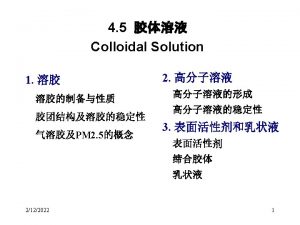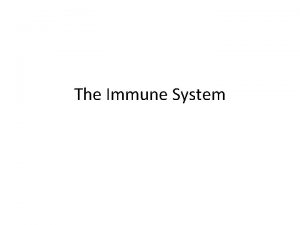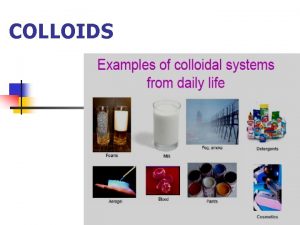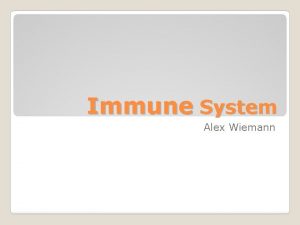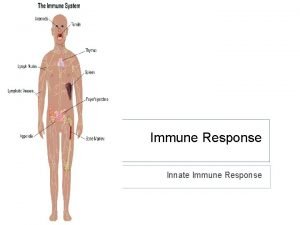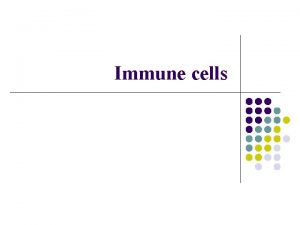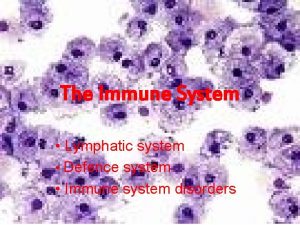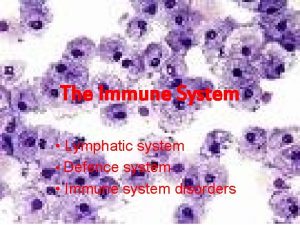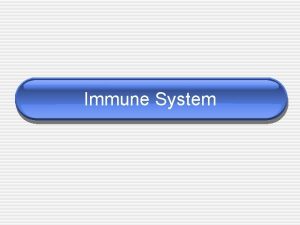The Immune System u Widely dispersed system u














- Slides: 14

The Immune System u Widely dispersed system u Review of structure and function ¶ bone marrow F located in marrow cavities of bones F yellow vs. red marrow F hematopoiesis

The Immune System u Review of structure and function · thymus gland F location F consists of lymphocytes and macrophages F “gives” immunocompetence to T lymphocytes via thymosins

The Immune System u Review of structure and function ¸ spleen F location F red vs. white pulp F functions

The Immune System u Review of structure and function ¹ lymph nodes F locations F structure F function

The Immune System u Review of structure and function º tonsils F locations F functions

The Immune System u Review of structure and function » lymphocytes and plasma cells F What is immunity? F origin and immunocompetence F T cells (cancer cells, transplants, bacteria, virus-laden cells) äcytotoxic T cells ä suppressor T cells ä helper T cells ä memory T cells F B cells (viruses, bacteria) äplasma cells ä memory B cells

The Immune System u Review of structure and function » lymphocytes and plasma cells F locations F primary immune response F secondary (anamnestic) response

Age-related changes in the immune system All lymphoid tissues decreases in mass and efficiency with age u u Bone marrow u Thymus gland ¶ puberty to 50, lose 90% of mass · loss of size = loss of thymosins ¸ new T cell immunocompetence decreases

Age-related changes in the immune system u B cells ¶ no decline with age · decreased responsiveness to antigens ¸ by 70, 85% reduction in antibody production ¸ B cell changes may be result of decreased helper T cell numbers

Age-related changes in the immune system u Spleen u Lymph nodes u Tonsils ¶ reach maximum size at 12 · palatine tonsils decrease gradually; pharyngeal tonsil (adenoid) atrophies completely ¸ unclear about functional losses

Age-related dysfunctions in the immune system u General decrease in immune responses ¶ decreased immune sensitivity · increased autoimmunity ¸ causes F decrease in precursor cells F decreased differentiation into T- and B-cells F increased suppressor T-cells F increased factors that inhibit immunity (? )

Age-related dysfunctions in the immune system u Age-associated T-lymphocyte defects ¶ T-cell numbers decrease with age · diseases normally held in check by T-cells are allowed to appear ¸ immunosuppressive treatment has same effect

Age-related dysfunctions in the immune system u Acquired immune deficiency syndrome ¶ HIV infects helper T-cells (CD 4 cells), ultimately killing them · alters ratio between helper T-cells and suppressor T-cells ¸ normal ratio is 2: 1 ¹ at ratio of 1: 1 AIDS symptoms begin to appear º at ratio of 0. 5: 1, full-blown disease u Lymphomas

Take home messages about immunity u decreased lymphoid tissue body-wide u general decline in immunity u decreased T cell number u decreased B cell activity increased incidences of autoimmune responses u
 Primary immune response and secondary immune response
Primary immune response and secondary immune response What is dispersed system
What is dispersed system Dispersed system
Dispersed system Biomedical therapies are provided by
Biomedical therapies are provided by Most widely practiced religion
Most widely practiced religion Most widely practiced religion
Most widely practiced religion Popular culture diffusion
Popular culture diffusion Types of self secured joints
Types of self secured joints The most widely used agile process originally proposed by
The most widely used agile process originally proposed by Rhipe architecture
Rhipe architecture Religion of africa
Religion of africa Widely used method
Widely used method Desmost
Desmost What is the third line of defense in the immune system
What is the third line of defense in the immune system Immune system flow chart
Immune system flow chart

